1. The Han Chinese (206 B.C.-220 A.D.)
1.1. Confucianism
1.1.1. Kong Fuzi (6th century B.C.)
1.1.2. "One of the primary tenets of Confucianism is filial piety, and classical Chinese texts are filled with references from Confucius and his disciples extolling this virtue" (353).
1.1.3. Mostly aimed at men and men practice the doctrine.
1.1.4. Filial piety => relationship between sons and fathers + children of both sexes honoring their father and mother equally.
1.1.5. Emphasis on 5 relationships (foundation of Chinese society)
1.1.5.1. ruler/minister
1.1.5.2. father/son
1.1.5.3. elder brother/younger brother
1.1.5.4. husband/wife
1.1.5.5. friend/friend
1.2. Patrilineal Kinship
1.2.1. "Patrilineal surnames provided the Han Chinese with connections to a common ancestor (...) These genealogies served to cement male hegemony as women were typically noted in family histories only as daughters, wives and mothers, not individuals" (353).
1.3. The Surname
1.3.1. There are several kinship terms for men. But for women the terms were more general and grouped together regardless of age.
1.3.2. Holders of the same surname can't married because they're believed to come from a common ancestor.
1.4. Life Stages of the Han Chinese Women
1.4.1. At birth faces the possibility of infanticide. People didn't want to waste resources on a woman who would be married off to another family. (Watering someone else's garden)
1.4.2. Marriage is a really important event. Chinese women belongs to her husband's patriline when she is married and her purpose is to serve that patriline.
1.4.3. There is practice of purchasing or fostering a young girl and raising her with the idea that she would ultimately marry one of the fostering family's sons. (355) There are issues in marriage because they were practically raised as siblings.
1.4.4. Divorce was rare and mostly suggested by the men. After a woman has a son, her position in that patriline is even more secure.
1.5. Nuanced Approaches to Han Chinese Gender and Kinship
1.5.1. Uterine family
1.5.1.1. A mother-centered family unit that could serve to support women cut off from their natal kin networks.
1.5.1.2. "By focusing her energy and efforts on her uterine family, a woman may create a future source of influence and security not found in her husband's family. Whereas patrilineal bonds were often reinforced by ritual, these uterine ties were strengthened by the emotional attachments between a woman and her children" (355).
1.5.1.3. "In order for a woman's investment in this mother-centric family to pay off, her son(s) would need to remain loyal to his mother--perhaps even at the cost of the patriline-- in order to repay the many sacrifices made by this mother on his behalf" (356).
1.5.1.4. "The key relationships are between the mother and her sons, a structure that makes the daughter-in-law a potential danger to the mother" (356).
1.6. Post- 1949 Trends
1.6.1. "The government's decision to allow couples a second child if the first is female only serves to perpetuate the "feudal" idea that girls are less desirable than boys" (357).
1.6.2. "The government began a vigorous campaign against the so-called "feudal" ideas that caused families to prefer boys over girls and urged the media to publicize cases of female infanticide" (357).
1.6.3. "The implications are clear: as China's population ages, there will be an increased burden on adult children to care for their elderly parents who are living longer. The combination of a lack of siblings and the recent socioeconomic reforms that have reduced welfare programs may leave couples with a heavy burden and responsibility with little opportunity for assistance or respite" (358).
2. Alternate Models of Kinship and the Family in China
2.1. The Dai
2.1.1. "Unlike the Han, Dai kinship is bilateral, with descent reckoned through both the female and male lines" (358).
2.1.2. "The Dai lack surnames that make lineage membership easily identifiable" (358).
2.1.3. "Husbands move into their bride's natal homes for three years, during which the men provide labor for the woman's family" (358).
2.1.4. "Divorce would occur at the request of either the husband or the wife" (358).
2.1.5. The parents change their name based on the eldest child. They become "parents of so and so" (358)
2.2. The Lahu
2.2.1. They place a great deal of value on gender unity.
2.2.1.1. Pregnancy Childbirth Childcare, Domestic chores Subsistence work Leadership
2.2.2. "The married dyad is more important than the individual" (359).
2.3. The Mosuo
2.3.1. "At no point in the relationship is there an economic tie between the couple; instead, the relationship exists 'to fulfill their needs for procreation and sexual gratification'." (359)
2.3.2. Sexual division of labor
2.3.3. "Children born as a result of walking marriages are never considered illegitimate, but rather belong to the household in which they are born" (359).
